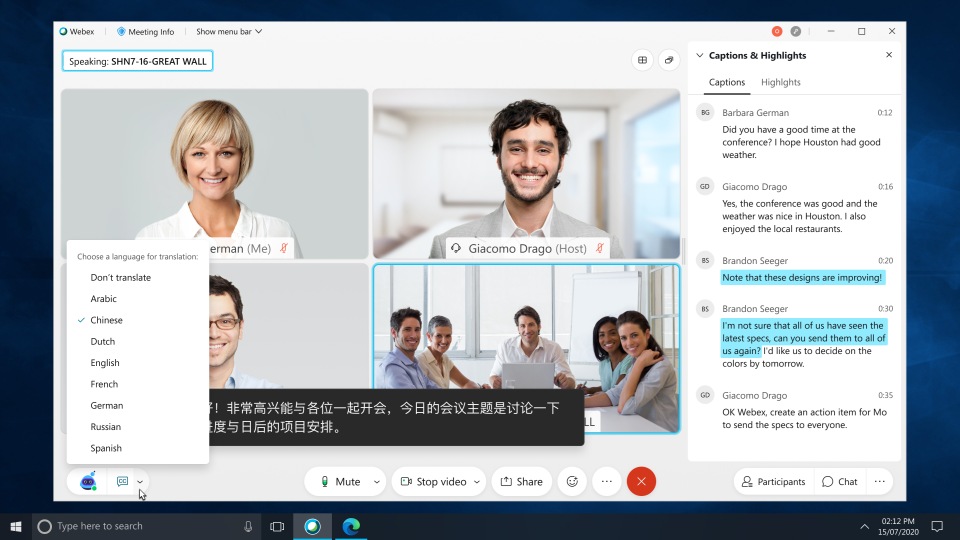Industry Thought Leadership
Work Will be Hybrid & Individual: One Size Does Not Fit All
May, 2021Before the pandemic struck, people in big cities would fight their way through morning traffic to operate from their offices – if not every day, most days. Moreover, we would hold the majority of meetings in person with just a few online. Sometimes an occasional travel for either an inTernal or external meeting would find its way into our calendars.
Prior to COVID-19, virtual meetings were useful, but rarely critical. During the pandemic, however, they have become the glue that holds organisations together. Gone are the old days when video conferencing felt like science fiction. As time has passed, we have learned that remote collaboration technology is, in fact, possible – and sometimes even preferable.
From evolution to revolution
What often happens with any new technology is that, in the beginning, there are strong proponents and opponents. As the technology matures, so does our usage of it. And ultimately if the technology is useful, it stays with us and develops. There is no doubt in my mind that collaboration solutions are here to stay, but that they will develop and improve as well.
During the pandemic, I often had the impression that we act as if this was the first time technology has changed the way we communicate. That, of course, is far from the truth. Just think about the influence of telephones, telegraphs, faxes, and emails and how those innovations changed communication. They replaced some face to face contact, but mostly they provided opportunities and enhanced human interaction in ways that wasn’t previously possible.
We see the same pattern repeat itself with video conferencing. The only difference is that the pandemic accelerated the video evolution and made it a revolution. Virtual meetings are here to stay – but how?
A true alternative?
Virtual meetings must improve to become a true and credible alternative to face-to-face meetings. At Cisco, we have the ambition to make our Webex collaboration platform 10x better than face-to-face meetings. This might sound like an arbitrary and unattainable goal, but let me illustrate through two examples on why, in fact, it isn’t:
- When you meet over Webex, with participants who speak different languages, you have the option to use real time translation. And if you can’t remember whether you agreed to a sales increase of 12% or 14%, you simply search the transcripts and find the answer in seconds.
- Noise from espresso machines, lawn mowers or construction can be a nuisance anywhere. In a meeting room it might help to close the window, but that’s pretty much all you can do. If participants join remotely, everybody can turn on noise suppression, which filters out distracting sounds and enhances human voice.
These are examples of Cisco Webex providing a better experience. And with a credible alternative to face-to-face meetings, it will encourage a more conscious choice each time you set up a meeting. The technical solutions already support this, and with the pandemic accelerating the acceptance of the virtual alternative, I believe we will see this choice play out even when we return to the office.

Pros & cons
In the public debate, you often see tech companies as proponents of remote work and mental health experts warning about the impact on employees. I believe there are good points on both sides, and if anything, the pandemic taught me these two things:
- No two people are the same (we knew that), and that’s why one size doesn’t fit all. As business leaders we must be fully aware of this when we lead our teams and organisations.
- Before the pandemic, many didn’t have a choice and had to go to the office. COVID-19 stripped office workers of choices and forced us home. We don’t want to go back to no options – we want choice!
As the future of work opens more choices, it’s critical that leaders don’t just transfer their office leadership practices to a new hybrid reality.
If we look at the positive contributions of virtual meetings beyond the pandemic, the list is longer than perhaps most people think: including savings on travel, efficiency through remote work and inclusiveness for individuals.
It is, however, important to note that virtual conferences will not replace face-to-face meetings entirely. They will enhance and improve human interaction as the technology and our use of it matures. Part of this process requires leaders to re-think their approach to leadership and acknowledge that we are all, in fact, different. We, therefore, deserve choice and versatility.

